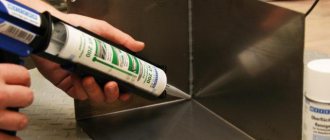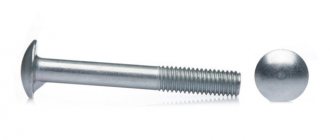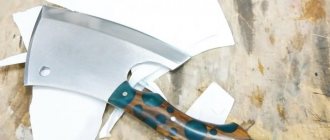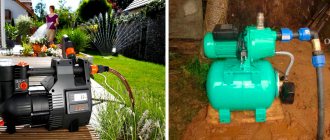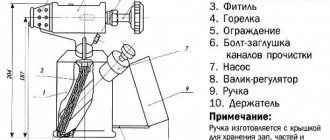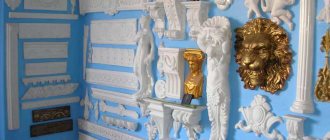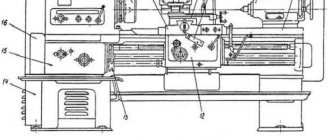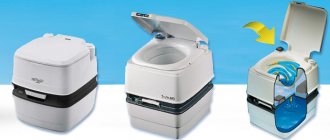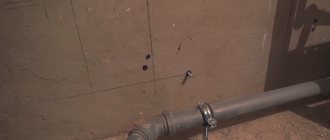Types of glue for metal products
Any adhesive designed for working with metal that can be purchased on the market provides high strength to the seam. And indeed, most often, destruction occurs not in the adhesive seam itself, but at the boundaries. That is, the reliability of the seam is determined primarily by the quality of preparation of the plane of the workpieces being glued.
Metal adhesive
Specialists who develop adhesives for metals offer many formulations that are adapted for working with metals. However, there are several types that are most widely used:
- Epoxy resin based adhesives.
- Cold welding.
- Double-sided tape.
Glue characteristics
Adhesive for joining metals has its own technical characteristics, which differ from one manufacturer to another. When choosing a specific adhesive composition, you need to pay attention to the following properties:
- drying time and conditions - as a rule, this depends on the place where gluing is performed and the specifics of the work itself;
- the maximum temperature at which the beneficial properties of the glue will be preserved - you should choose a composition that can withstand the conditions of use of the assembly or its future processing;
- method of application - some adhesives are recommended for spot treatment, others for complete coverage of the joints of parts;
- gluing technology;
- consistency - these can be tubes with the composition and hardener, as well as plastic sticks. The latter are convenient because you don’t need to knead: being anywhere, you cut off a piece, knead it and use it;
- materials with which gluing is possible - universality is a vague and unreliable concept here; it is better to choose a narrowly targeted adhesive to solve a specific problem. For example, for joining plastic and metal.
Scope of application
Metal adhesive is broadly applicable in many areas of life. Breakdowns often occur in industry and everyday life.
A child’s toy is broken – we are looking for an opportunity to fix it. It is necessary to repair a car, an exhaust pipe, repair any damage - there is also a need to reliably connect metal surfaces to each other. In the aviation, general construction and chemical industries, gluing metal parts is also widespread.
However, the compositions can differ in their narrow purpose and be universal. For example, professional heat-resistant adhesive is often used to repair plumbing, to repair cracks in metal, in the construction of fireplaces and stoves, when installing heated floors and for many other tasks.
Properties of heat-resistant base
If metal components are exposed to elevated temperatures during operation, their integrity will deteriorate over time and their service life will be shortened.
A heat-resistant composition of type “300” based on epoxy resin will be a worthy alternative to welding work.
Even high-temperature operation of the device will not damage the connections of the components. The lower limit of stability of the heat-resistant composition is 300 degrees Celsius. In addition, it is waterproof, thermally conductive and environmentally friendly.
Requirements for adhesives
A high-quality glue for metal after its use must fulfill several conditions:
- the most durable connection, which allows you to use parts without risk;
- preservation of properties over time;
- resistance to temperature changes;
- chemical neutrality, protection of the bonding site from corrosion;
- water resistance;
- minimal shrinkage after curing;
- no pungent odors;
- environmental friendliness.
Modern adhesives for bonding metal surfaces are divided into two main categories based on the extent of their application.
Two-component adhesives are compounds capable of joining parts made of different materials (wood, concrete, metal). They are widely used both in everyday life and in installation and repair work. Once set, this glue becomes quite plastic. However, this does not prevent him from holding the glued parts tightly.
One-component adhesives have a narrow application focus. This composition is recommended for use at temperatures not lower than +5 degrees Celsius. For industrial use, it is produced in aluminum tubes, which allow it to retain its beneficial properties longer.
There are also fast-hardening and, accordingly, slow-hardening adhesives.
The following adhesives for metals are considered effective:
- epoxy glue (“Moment”, BF-2) – it contains resin and fillers that accelerate curing;
- cold welding (Poxipol) - contains one or two components, deforms the welding mass, introducing it into the surfaces to be glued - this way it adheres them as tightly as possible;
- double-sided tape - adhesive tape on a polypropylene or foam base.
Before you begin gluing, you need to properly prepare the surfaces, remove signs of corrosion and traces of contamination from the parts. Do not use solvents or gasoline, so as not to leave an unnecessary layer of additives.
We recommend: What can glue and why PVA glue is unique
Then you should thoroughly mix the cold welding components. Next, the finished mixture must be applied to the surfaces that need to be glued. The next step is to press the metal parts together or put them under a press.
Treating surfaces with a special primer, which will first degrease them and improve adhesion, will help improve the quality of gluing.
Adhesives for this type of gluing are compositions with increased mechanical strength. They are used when working with shelving, signs, furniture, display cases - with structures that are not subject to significant loads.
This type of gluing, on the contrary, is suitable for dynamic objects (elevators, machines, fans, cabins and bodies). For some static objects they can also be used if they are subject to thermal deformation.
Epoxy resin
Many compounds are based on epoxy resin. It has high adhesion to various materials, even metal, plastic and glass. Under the influence of hardeners, epoxy resin polymerizes and hardens. In this state, it is not dangerous for humans and animals. Epoxy resin that has not cured is a powerful poison that can cause serious harm.
When gluing metals with epoxy resin, you can obtain both an elastic deformation and a static rigid seam.
Bonding materials with different linear expansion coefficients
When heated or cooled, the adhesive joint of these materials experiences severe load deformation. It is recommended to glue them with a polyurethane mixture. There is no noticeable difference between strain bonding and joining materials with different expansion coefficients. The only difference is that in the first case, the adhesive seam must withstand high temperatures.
If metals are exposed to moisture for a long time, they oxidize and corrosion appears. Its occurrence is facilitated by the fact that the glue absorbs moisture that remains near the adhesive joint for a long time.
To avoid this, additional sealing of the adhesive joints is carried out, for example, with a layer of waterproof paint.
As for production, currently gluing products is a worthy alternative to welding and other types of joining metal parts. Some of their advantages, from a professional point of view:
- under deformation loads, they are superior to point contact in terms of structural reliability;
- adhesives significantly reduce or eliminate corrosion problems;
- By gluing together metal structures, we make them more resistant to vibrations and shocks;
- The technology of spot or planar gluing of metal parts saves production costs, making product manufacturing processes cheaper.
When gluing metal parts, you need to take into account the features of the future assembly, choose the right glue and carefully prepare the surfaces. This way you can glue even what cannot be welded.
Two-component adhesives
These varieties have gained wide popularity due to the fact that they can connect parts and elements made of concrete, wood, metal alloys, etc. Its versatility and high adhesion have made it popular for use in everyday life and in production. It is used for repair and installation work. In addition, it is used to fill voids, seal joints, etc.
They are used for gluing wet surfaces; moreover, some of them can be used under water.
Instant two-component adhesive
Where is adhesive used for metal objects?
The glue has found application in many areas. In domestic use, this is, for example, repairing children's toys, hoods, repairing damage, car repairs. On an industrial scale, this is used in aviation, chemistry, and construction.
The glue can be highly specialized, or it can be a universal compound.
Thus, a heat-resistant professional product is used in plumbing repairs, for filling small doors and chips in metal parts, when working with fireplace systems and stoves, when installing heated floors and other processes.
Features of two-component metal adhesive
The two-component material is prepared for use immediately before starting work. Such compositions have a short shelf life. This is largely determined by the components that are included in it, but basically this material retains its working properties for no more than three hours. This time can be significantly saved if you use heating.
Seams made using these materials are highly durable. X is used, for example, when making a connection between a sleeve and a bearing.
After setting, two-component adhesives acquire a certain elasticity, which, nevertheless, reliably holds the glued workpieces. This property allows it to be used for working with parquet plates and substrates.
Which brands to target
Poxipol “Cold welding” (gray)
A special two-component adhesive that is brought into working condition after kneading with wet hands.
A low-cost, short-curing two-component epoxy composition made on the “two in one” principle. It has an extremely short time of sufficient polymerization; it reaches a solid state within 10 minutes. Final polymerization occurs after 60-80 minutes.
The term “final polymerization” in this context means that the epoxy joint can be drilled, milled, sawed and cut with a special metal tool. However, for complete polymerization, when the hardened glue can withstand the maximum loads inherent in its capabilities, at least a day must pass.
Does not collapse upon contact with low temperatures, up to minus 40°C degrees, and high temperatures, up to plus 180°C degrees. If the bonding field is properly cleaned, it can even be used on water and high pressure gas pipelines. The gray color of this cold weld makes it invisible on steel, cast iron and iron.
EpoximaxX 1.2 kg
Epoxy two-component liquid adhesive. Can be applied with a brush. It is a modification, specially designed for metals, of the classic EAF. Maximum temperature of use is 120°C degrees. Minimum – minus 40°C degrees.
Useful to know > What is epoxy glue and where is it used?
Total curing time is 3 hours. Tensile strength reaches 60-80 MPa, the spread of 20 units is due to the difference in materials on which the glue can be applied. But the strength of the adhesive seam is such that the rupture often occurs not along the gluing line, but in the material being glued together.
Weicon RK-1500
Two-component epoxy-based constitutional adhesive. The time for reliable fixation of the bonded surfaces begins within 5 minutes. You can glue products made of aluminum, steel, titanium, as well as these metals in their combinations. This glue is simply unique in terms of the strength of the adhesive seam: it can withstand tensile loads of up to 26 N per mm2. Operating temperature range from minus 50°C to plus 130°C degrees.
Due to its high adhesion, it can be used without preliminary mechanical treatment of surfaces, if this is not possible or there is no time for it. Although, of course, abrasive processing is desirable, as it increases the adhesion of the glue and the material being glued. In addition to metals, the composition can be used to fasten products made of ceramics, glass, and hard plastics.
Strong steel stick renewal composite
Chemically resistant two-component epoxy adhesive created using the two-in-one cold welding principle. A multilayer bar, which, after cutting off the required amount, is kneaded with wet hands and an adhesive seam of the desired configuration is formed from it. For sufficient sealing, 40 minutes are enough. For full – 12 hours.
Operation in contact with caustic substances in the form of alkalis, acids, including concentrated ones, as well as with ethers and alcohols is allowed.
Advantages of a two-component composition for metal
Two-component adhesives have the following advantages:
- high strength parameters;
- waterproof;
- lack of conductivity of electricity.
Metal adhesives can be used to make certain products. To do this, the finished material is poured into pre-prepared casting molds.
Polymerization of the glue occurs only after mixing its components with each other. They are usually supplied packaged in different packages.
The first component is epoxy resin, the second component is hardener. According to the recipe, these are polymers, but their properties appear only after they are mixed.
Please note that this work is irreversible and may not last long. Therefore, before starting, you need to prepare everything in advance.
How to choose the right adhesive for metal? We understand the requirements for the composition
Traditionally, metal parts were connected to each other using welding, screws, and riveting.
Thanks to new technologies, a new method has emerged, and now, using special compounds, it is possible to glue metal.
Requirements for adhesives
Adhesive for joining metal workpieces has its own characteristics. When choosing, take into account the gluing technology, methods of applying a specific composition (full surface coverage, spot application), and drying period.
The quality and reliability of operation depends on a number of glue parameters:
- duration of validity;
- resistance to temperature changes;
- corrosion resistance;
- indicators of shrinkage and expansion.
How can you glue metal to metal? Adhesives of universal and narrowly targeted action, of various consistencies and degrees of viscosity are produced.
The adhesive composition must meet the following requirements:
- resistance to temperature changes;
- environmental friendliness;
- chemical neutrality;
- reliability and strength of the resulting connection;
- eliminating risk during operation of the structure;
- maximum shrinkage rates after hardening.
Different compositions are used in everyday life and at work, but in any case it is necessary to ensure a reliable connection. At home, they often choose easy-to-use adhesives in small tubes; gluing metal in production will require the use of structural professional products.
Metal adhesive differs in a number of parameters:
- number of components (one- and two-component compositions);
- temperature conditions during use;
- degree of viscosity;
- intended purpose (universal compositions or only for certain types of bases).
One-component products are ready for use and are most often produced in tubes, since in such packaging the properties of the composition are preserved for a long time. Two-component adhesives for metal are a composition of compounds packaged in various packages: resin and hardener.
These are polymer materials, but the main characteristics appear only after combining and mixing the components. Polymerization takes a short time, the process is irreversible, so gluing is carried out quickly, having prepared the parts and surfaces in advance.
Main types:
- Metal adhesive based on epoxy resins. Available in two-component compositions, in the form of a liquid or paste. Before use, the components of the kit are mixed. In addition to epoxy resin, it includes additives that promote curing, a metal component (filler), and other substances (for example, sulfur). It is considered a universal product, used in various areas of production and in everyday life. It is characterized by reliable connections, resistance to temperature changes, aggressive liquids, and corrosion. When metal chips are added to the mass, glue is used to restore the shape of the parts.
- Double-sided tape. It is an elastic tape with a closed cell structure, foamed or made of polypropylene with an applied adhesive composition. The selection of adhesive tape depends on the type, weight and area of the parts to be connected. Application: installation of various structures, repair and construction work, finishing, printing, advertising.
- Cold welding. Compositions with one or two components are produced; gluing occurs due to deformation of the adhesive components and their introduction into the structure of the base. Liquid adhesive welding is a two-component composition, dry (plastic) is similar to plasticine, the mass kneads in the hands. Provides a reliable connection that is resistant to high temperatures. The use of adhesive cold welding is often the only option to tightly connect metal elements (for example, when repairing packages with explosives).
Do not confuse “cold welding” adhesive compositions with the hardware method of joining metal.
In addition to the adhesives listed, the following compositions are used in various industries:
- based on cyanoacrylate. They are distinguished by an instant (up to 5 seconds) polymerization period, strength, and resistance to adverse external factors. Convenient to work with iron and small parts;
- based on methyl methacrylate. The main characteristics are strength, reliability, impact resistance. Such adhesives have found application in the automotive industry.
To connect the bushings and threads, anaerobic glue is used, which creates a special film when gluing. It serves as a kind of protection during polymerization, blocking the access of oxygen to the seam. As a result, the substance quickly hardens, forming a strong bond. This type of glue is often used as a sealant (plumbing, repair work).
Popular brands:
- epoxy compositions: BF-2 (corrosion-resistant, reliable, economical), Moment Super Epoxy adhesive for metal (transparent, with increased strength, multi-tasking);
- double-sided adhesive tapes: Metal Shelf Tape, Dubl Kote, DublFix (USA);
- cold welding: Poxipol (Uruguay) - suitable for gluing metal and various materials, available in the form of a plasticine-like mass of gray, brown or white color, Almaz, Polymet (Russia), ABRO, Hi-Gear (USA).
Bonding options
To obtain a reliable connection, it is necessary to prepare the surfaces before gluing the parts:
- thoroughly clean surfaces from dirt and rust;
- For better adhesion, treat the base with a primer.
In some cases, before gluing metal to metal, the bases are treated with abrasive materials. This reduces the smoothness of the surface and promotes a stronger connection of the parts being glued.
Then glue is applied to the surface to be glued in accordance with the instructions, the parts are pressed tightly and the glued structures are protected from moisture until the composition is completely polymerized and hardened.
Static hard
To join workpieces that are not subject to dynamic deformation, adhesives with increased mechanical strength are used. A strong seam is formed, and the parts being glued together form a monolithic structure.
Brands of adhesive compositions for static gluing of metals:
Scope of application: construction, installation of display cases, shelving, furniture, boxes, signs, production of machine tools.
Deformation
It is used to connect parts experiencing vibrations and various types of deformation. The seams are flexible and stretch slightly. Adhesives based on epoxy with plasticizers or polyurethanes are mainly used.
Composition brands:
With different linear expansion coefficients
When joining such materials, the seams take on serious loads. The compositions used are the same as for deformation bonding, but they must be heat-resistant. Polyurethane based adhesives are suitable.
When connecting steel parts operated in conditions of high humidity, standard metal adhesives are used. After gluing, the joint is additionally coated with a waterproof coating (water-repellent paint).
Bonding with other materials
In production and at home, it is often necessary to glue dissimilar materials: metal to glass, plastic, wood. Special adhesive compositions with maximum adhesion are selected.
To glue regular or plexiglass to metal, you need a transparent compound that forms an invisible seam. Adhesives based on cyanoacrylate (CA-500. 200), polyurethane, silicone, and heat-resistant silicate sealants are suitable for gluing plexiglass and glass.
To connect metal to plastic surfaces, use any one- or two-component adhesive composition (for example, 3M™760 hybrid sealant, Moment glue). If the bases are static, double-sided tape is suitable.
Bonding metal to a wooden base will require the use of rubber-based adhesives, cold welding (Poxipol, Permabond). The surfaces are treated (wood with solvent, metal with sandpaper and primer), dried, then glue is applied according to the instructions.
Instructions on how to glue metal:
Modern metal adhesives make it possible to avoid welding and riveting and obtain reliable and durable connections.
Source: https://vsezaklei.ru/kley-dlya-metalla/
One-component adhesives
Materials of this type are supplied in different forms of packaging. For industrial use, such glue is produced in tubes made of aluminum weighing 0.6 kg. They are easier to recycle after use. In addition, in tubes made from this material, the glue retains its properties longer.
One-component adhesive
Meanwhile, adhesives that contain one component in their formulation have a limited range of uses. So, most of these materials can only be used at room temperature, its minimum level is +5 °C. When storing it, it is also necessary to observe the temperature regime determined by the manufacturers. Elevated temperatures have a negative effect on the adhesive and its properties.
What to look for when purchasing adhesives
With a huge range of epoxy materials for gluing metals, you need to be somewhat skeptical about those that are marked “Universal”. Remember that the best guarantee of product quality and performance is specialization. When choosing such adhesive welding, special attention should be paid to:
- The temperature range at which the adhesive applied to the surface will reliably fix them relative to one another. After all, when purchasing glue, do you imagine the conditions under which the surfaces to be glued will be used? This is what you start from.
- Methods of application to bonded surfaces. There are materials and operating conditions that require spot welding. If, when necessary, you use a solid mass of glue, then its consumption increases many times over. Considering the cost of some types of epoxy adhesives for metal, such continuous use will be very expensive.
- How long does it take for the glue to initially and completely polymerize? This parameter depends on the type of parts, the conditions under which cold welding will be carried out and the characteristics of the environment.
- Method for preparing an adhesive composition. If you need to mix the compound and hardener, which are in separate containers, this is not always convenient. Consult the seller. Perhaps he will tell you a convenient form of epoxy for your case.
- Find out how the adhesive joint will behave when in contact with motor oil or fuel - if repairs are to be made on a car, or with aggressive media in the form of acids and alkalis, or in contact with an open flame or water, including sea salt.
Useful to know > Which epoxy resin should be used for a completely transparent volumetric fill
Additional recommendations:
- Sometimes the label “cold welding” can be misleading regarding the types of surfaces being joined. Semantics let us down: welding means for metals. Nothing of the kind, because this term is conditional, and this type of epoxy compound is also applicable to earthenware, glass, wood and other materials.
- Do not buy large quantities of glue in reserve. This is especially true for block monolithic mixtures. Slow diffusion of components occurs in them, and after a year, maximum one and a half, these adhesives lose their properties. Their effect can be extended several times only without violating the integrity of the packaging and by storing them in the cold, at a temperature of about zero degrees.
How to choose a good glue
When choosing an adhesive for working with metal, it is advisable to be guided by some simple criteria:
- Geometric dimensions of bonded surfaces.
- Physico-mechanical parameters of materials.
- The adhesive that will be used should reduce the difference between elasticity and coefficient of thermal expansion.
If different materials are glued together, you can use the glue that can eliminate this difference. If hard and elastic materials are to be combined, then a hard composition must be used for the hard one, and a correspondingly soft one for the soft one.
Criterias of choice
To choose the right adhesive for gluing metal to metal or other materials, you need to evaluate:
- dimensions of the treated surface;
- properties and composition of the connecting agent;
- drying speed;
- physical and mechanical parameters.
Valera
The voice of the construction guru
Ask a Question
It is important to consider the differences between the surfaces being joined. If the fastening occurs between solid materials, it is better to purchase a hard glue; if attached to an elastic one, it is better to purchase liquid or soft glue.
Advantages of metal adhesive in solving production problems
The advent of modern adhesive compositions has led to the fact that compounds of this type have become widely used in the production of, for example, metal structures. In particular, this method of connecting parts becomes an excellent alternative to welding or riveting.
Pipe gluing
Adhesive compositions have a number of advantages over these methods of creating permanent joints when resisting deformation loads. The use of adhesives eliminates problems associated with corrosion that occurs at the welding site.
Structures assembled using adhesive joints have less weight, retain their impact resistance, and successfully withstand deformation loads.
The use of glue when creating structures allows, even at the design stage, to lay down exactly those materials that will provide the required parameters for the connection.
In addition, the use of glue has a positive effect on the cost of the product as a whole.
By reducing the mechanical methods of creating permanent connections in metal structures, adhesive manufacturers receive significant benefits. In particular, the assembly technology of the finished product is significantly simplified.
Industrial adhesives for stainless steel
Stainless steel is not an ordinary metal.
It is resistant to corrosion and has a number of characteristics that make it a very capricious material to use in work. Meanwhile, stainless steel is an excellent building, finishing and structural material, the remarkable properties of which largely justify its some capriciousness. When gluing stainless steel parts with RAMSAUER® 655 KRAFT FIX glue , including with other materials, a composition with a strong guaranteed initial setting plays a special role. It has many advantages over its competitors thanks to:
- high hardening speed;
- rapid development of the required strength;
- ease of use;
- excellent mechanical properties;
- the presence of several colors;
- no need to prime the surface;
- Possibility of leveling uneven and void surfaces;
- high resistance to weathering and aging;
- resistance to vibration, cracking, tearing;
- displacement compensation;
- no need for initial fixation when gluing.
For production work with stainless steel and other metals, the stainless steel adhesive RAMSAUER® 655 KRAFT FIX has proven itself to be excellent. It is the most popular professional industrial adhesive, which is used in many enterprises and private workshops.
The peculiarity of this product is that it can be successfully used not only when working with stainless steel, but also with a large number of other materials, for example, wood, glass, stone, metals, mineral products (concrete, brick, insulation), plasterboard. It is ideally suited for gluing mirrors to stainless steel or other substrates without damaging the amalgam. A distinctive feature of this adhesive for stainless steel is its resistance to mechanical loads, atmospheric factors, and compensation of loads arising during gluing.
The use of adhesive for stainless steel RAMSAUER® 655 KRAFT FIX with a strong initial set when working with stainless steel and other metals in some cases is justified not only by the high manufacturability of assembling metal structures, but also by low cost, the absence of complex technological equipment, simplicity of the process and many other factors that significantly make assembly easier and cheaper. This composition has proven itself only on the good side and allows you to assemble complex stainless steel products with maximum simplicity and high speed. This glue has found its use in industries of various specializations, in construction, and in everyday life.
We are happy to advise and provide additional information. We recommend that you always comply with the requirements of the Technical Data Sheets for Ramsauer professional sealants and adhesives.
How to properly connect metal surfaces
It is not uncommon for there to be a need to glue two metal parts together, even at home.
Before you begin this work, it makes sense to go to your nearest hardware store and ask for the so-called cold welding.
The procedure for cold welding looks something like this:
- First, you need to prepare the surfaces.
- Secondly, remove traces of corrosion from parts.
- Thirdly, mix the cold welding components together. Many manufacturers supply this glue in the form of a filled tube, where the outer layer is one component and the inner layer is another.
- Fourthly, they must be mixed until a homogeneous mass is obtained. By the way, when mixing, chemical reactions can occur, releasing a small amount of heat.
- Fifthly, the resulting mass must be applied to the prepared surfaces.
- Sixth, metal parts must be squeezed together or placed under a load.
Gluing metal parts
Depending on the type of cold welding, the curing time may vary.
Preparing surfaces for gluing
An important step that affects the reliability and durability of the connection is the preparation of the surfaces to be joined before gluing them. The adhesive composition cannot adhere properly to a dirty or rusty surface, so you should first go over the joint with 120-240 grit sandpaper. If there is any hard coating such as paint, varnish or other, it must also be removed. Sandpaper will leave small risks, you should not be afraid of them. They are needed for good adhesion of glue and metal. After mechanical treatment, the parts are thoroughly degreased with solvent or acetone.
You can use any solvent, since it cannot damage metal parts. However, do not use gasoline or any paint thinners.
They leave a thin layer of additives on the metal surface, which will prevent the metal from bonding firmly. After degreasing, and waiting for the surface to dry, you can begin the gluing operation. Depending on the type of seam, a distinction is made between static and deformation bonding.
Degreasing metal surfaces
Improved bonding quality
Before gluing metal parts, it is necessary to carry out preparatory work, namely, it is necessary to clean it.
Both metal surfaces that will be connected must be cleaned of dirt, grease, and oils.
You can use detergents for this. After processing, they should be wiped dry; it would not hurt to blow the surface with dry air.
By the way, there are substances on the market called primers. After treating a clean surface with this composition, adhesion improves.
Static rigid bonding of metals
Compounds for static joints are quite hard on the Shore scale. In addition, these compounds have high strength. The resulting products are monolithic and work well against shear of the layers of the product. This joining method is used in metal structures that do not experience dynamic loads.
Static rigid bonding of metals
How to glue aluminum correctly?
Bonding any metals is a very responsible process. Working with aluminum is no exception. In order for the joint to be strong and durable, it is important to choose the right glue. Aluminum has a number of features that make joining it using adhesives particularly difficult. The metal is covered with a film of oxides, which reliably isolates its surface from external influences, and in addition, has extremely low porosity. These two properties, considered positive, make working with aluminum elements somewhat more complicated. Therefore, when working with this metal, specialization is more important than ever - universal adhesives, even the most “advanced” ones will be powerless here.
To glue surfaces that have low porosity, and even those covered with an oxide film, it is necessary to carry out careful preparation. Surfaces are thoroughly cleaned using household detergents and warm water, and then dried and degreased with alcohol-containing compounds. Removing the oxide film from the metal is impossible, since it is instantly renewed on the treated area, so gluing is done directly on top of the oxidized surface. Previously, when polyurethane compounds were not so perfect, a layer of primer was first applied to the aluminum. Sometimes this led to unpredictable consequences, since the primer mixtures reacted differently with the adhesive components. Modern products do not require priming before application, as they contain specially selected components that enhance metal adhesion.
After the surfaces are degreased, glue is applied to them in accordance with the instructions for the specific product. Deviation from the technology described in the documentation for the glue is not allowed! When gluing aluminum, every little detail is important - only in this case can you rely on the quality of the resulting product.
Heat-resistant glue for metal
Several technologies are used to fasten workpieces: welding, riveted joints or gluing. The last method is a point action on the workpiece to obtain ultimate strength. The possible thermal effect on the seam site is also taken into account. For such work, you need to use heat-resistant metal adhesive rated at least 300 °C.
Heat-resistant metal adhesive
Composition and rules of use
Metal adhesive is an adhesive mass containing one or two components. As a rule, the composition includes the following components:
- The base is epoxy resin, it is designed to ensure its plasticity and uniformity.
- The filler is a metal component.
- Additional substances are sulfur and many other elements.
The strength of the resulting joint directly depends on the composition and quality of preparation of the workpieces being joined. If such joining is performed in laboratory conditions, the resulting seam can show better characteristics than seams obtained by traditional welding. But practice shows that these strength parameters will be significantly worse and therefore cold welding is used for minor repairs of metal and polymer products.
Photo of the cold welding process of metals
To obtain maximum efficiency in joining metal workpieces, you should follow a few simple rules:
- Ensure that the surface of the products being joined is extremely clean.
- The work must be carried out with a well-mixed mixture containing resin and hardener.
To speed up the joining process, you can heat it to a certain temperature. Information about this should be contained in the instructions for use of the composition.
How to glue metal to metal
There are several types of glue that are most often used when gluing metal surfaces to each other:
Bonding metal to metal
- Epoxy adhesive. This type has the highest water resistance. Consists of two types of epoxy resins that are mixed with each other;
- Super glue Moment for metal “Moment Super Epoxy Metal” - applied in a thin layer, tightly glues metal surfaces;
- Cold welding, consisting of two tubes with substances for various purposes - one with an active adhesive agent, the other with a special substance for hardening;
- Double-sided tape - glues metal to metal and other surfaces.
Regardless of the type of glue used, the actions during preparation and directly gluing metal surfaces, you need to do the following:
- Clean and degrease the surfaces; if there is a need to get rid of traces of corrosion, pre-sand the surface;
- Study the instructions for the glue if available; if cold welding of two substances is used, it is necessary, without deviating from the recommendations of the instructions, to mix them;
- Apply a thin layer of glue to both surfaces so that when the surfaces are compressed, the remaining glue does not come out;
- Squeeze the surfaces with force and wait until the glue sets. The time, as a rule, indicated in the instructions for using the glue, ranges from 5 seconds to a minute. You can place something heavy on the surface if their dimensions allow this, or use special clamps or a vice;
- If there is a glue seam left that may interfere with further use, you can carefully sand it with sandpaper;
- For small products, you can use double-sided tape in cases where the surfaces will not be subject to intense mechanical use. To do this, glue a strip of tape onto one surface with the sticky side, then remove the protective film and place the second surface on the adhesive base that appears and press. In this case, there is no need to wait for it to harden; you can immediately start using the glued object.
We recommend: How to glue iron-on stickers to clothes and how to make them yourself?
Advantages of gluing
The use of metal gluing does not require personnel to have any distinctive professional skills or special equipment. After the operation, the seams are exceptionally tight and most often resistant to moisture. This technological operation can be performed at any place. Unlike traditional welding, adhesive seams, as a rule, are not subjected to additional mechanical processing.
In addition, gluing metal does not require much labor and this leads to a reduction in the cost of the unit.
This technology is used when it is not possible to use other methods of joining metal workpieces.
The best brands
For domestic needs, compositions with an upper temperature limit above +120° C are rarely used, this is due to the characteristics of the product’s operation. Heat-resistant adhesives are used in the automotive and aviation industries, where special requirements are placed on gluing technology and the product itself.
Popular adhesives used at home are presented below.
Superglue “ Moment Super Epoxy Metal ”, which allows you to glue metal to various materials. The composition contains hardeners and epoxy resins. The product is resistant to low negative temperatures, oily substances, and solvents. Adhesive joints do not spread or decrease in volume during curing.
Maple-812 belongs to semi-professional and household products; it is a paste that can qualitatively combine ceramics, plastic and various metals. After final hardening, a very hard and at the same time fragile seam is formed; for this reason, the glue is recommended to be used only for products that will not be subject to change in shape during use. Primary hardening occurs at room temperature within 2 hours, final hardening occurs at a temperature of +80° C for one hour. Klen-812 should not come into contact with open fire. The product is packaged in 250 g containers, the price of one container is approximately 1,650 rubles.
VK-20 is polyurethane, and thanks to the catalysts it contains, it is resistant to short-term heating up to +1000° C. The adhesive is easy to use, the surfaces are joined within five days at room temperature. If it is necessary to speed up the process, you need to heat the product to +80° C. The glue has excellent adhesive properties, is waterproof, two-component (after combining the components, the product is suitable for use for seven hours).
We recommend: Linoleum glue for joints: characteristics of the best types, how to use
VS-10T is made from special resins, methenamine, quinoline and organic solvents. The formed seam can withstand heating up to +200° C for eight days, +300° C for a maximum of five hours.
How to use:
- Apply a layer of BC-10T to the surface and leave for 60 minutes to remove the solvent;
- connect the surfaces and place under a press (pressure should be 5 kgf/m2);
- place the product in a heating cabinet for 2 hours at a temperature of +180° C;
- remove and let the structure cool at room temperature.
The product can be fully used after 12 hours. VS-10T is sold in containers of 300 g, the price of one is approximately 1950 rubles.
K-300-61 is a special product, three-component, consisting of an amine hardener, filler and epoxy-silicon resin. Consumption is approximately 200-300 g/m2. It is difficult to find on sale; it is sold wholesale in 1.7 liter metal containers.
The main criterion when choosing a composition is its adhesive characteristics; the porosity and roughness of the parts, the area to be bonded, as well as the conditions in which the product will be used are also assessed.

